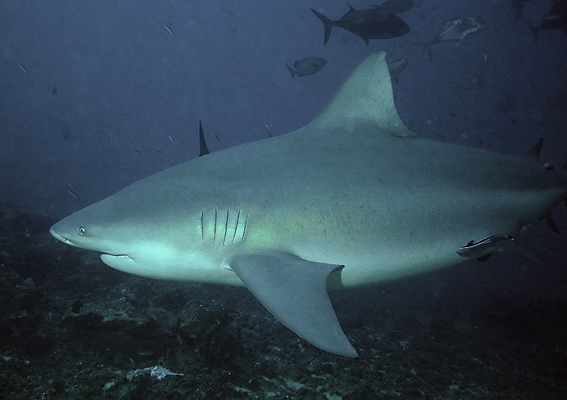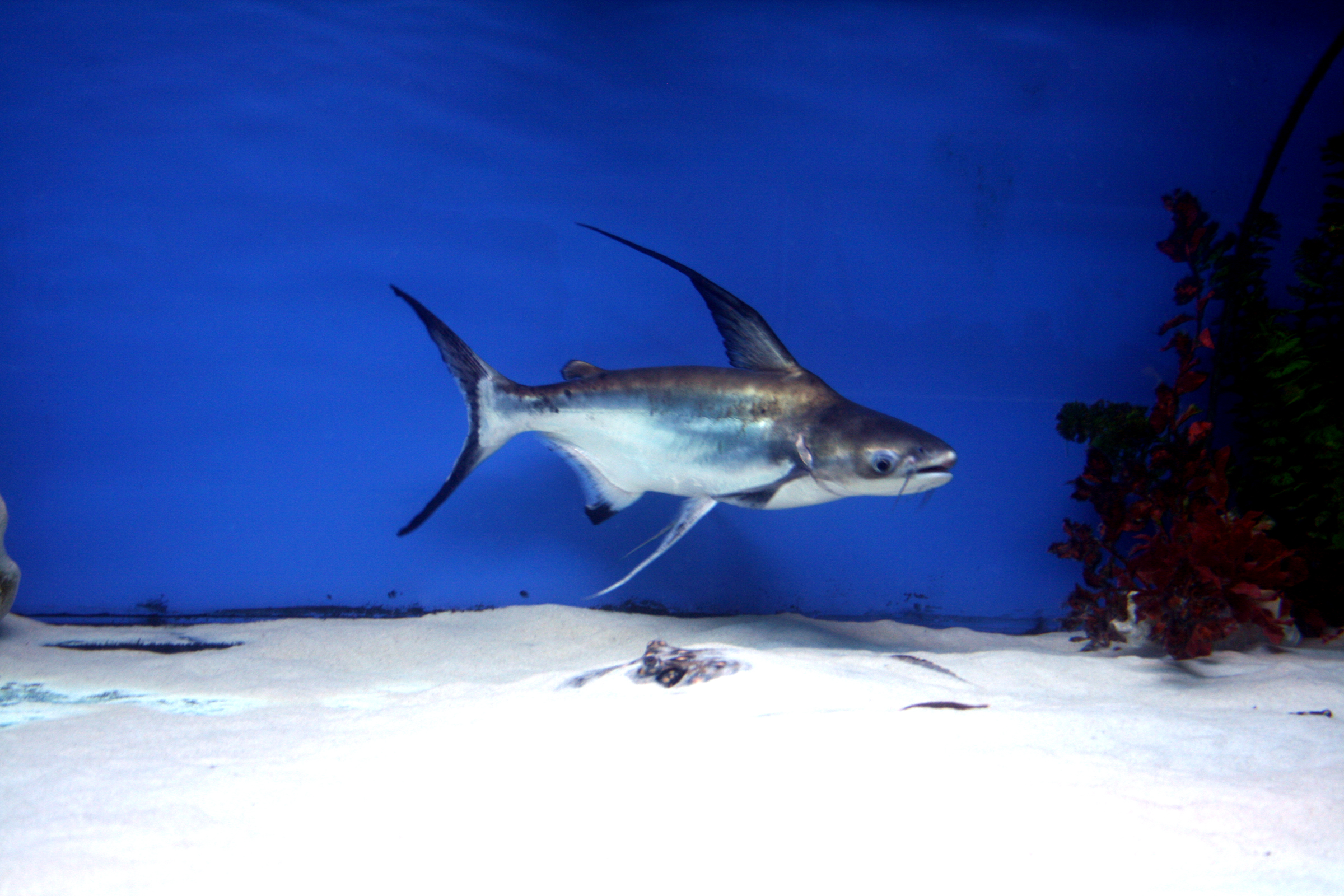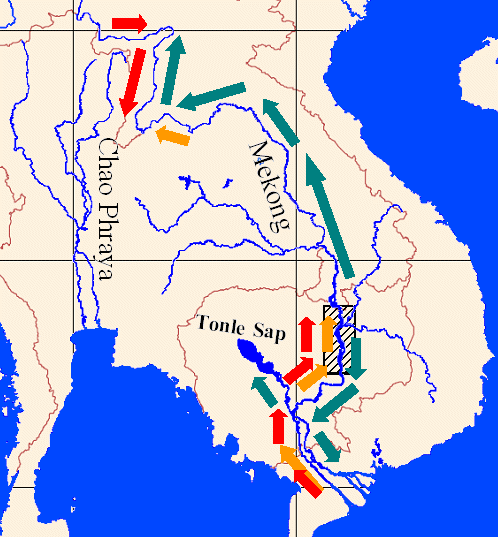|
Freshwater Shark (other)
Freshwater sharks are sharks able to live in freshwater lakes and rivers, including: * the river sharks, ''Glyphis'', true freshwater sharks found in fresh and brackish water in Asia and Australia * the bull shark, ''Carcharhinus leucas'', which can swim between salt and fresh water, and are found in tropical rivers around the world. A small number of freshwater fish cyprinids and catfish(which are bony fish and thus quite unrelated to sharks) are also commonly called "freshwater sharks", "sharkminnows" or simply "sharks", particularly in the aquarium fish trade: * ''Balantiocheilos melanopterus'' – Bala shark, tricolor shark, silver shark * '' Epalzeorhynchos'' – typical freshwater "sharks" * '' Labeo'' – * ''Puntius denisonii The Denison barb, Denison's barb, Miss Kerala, red-line torpedo barb, or roseline shark (''Sahyadria denisonii'') is an endangered species of cyprinid fish endemic to the fast-flowing hill streams and rivers of the Western G ... [...More Info...] [...Related Items...] OR: [Wikipedia] [Google] [Baidu] |
Bullshark Beqa Fiji 2007
The bull shark (''Carcharhinus leucas''), also known as the Zambezi shark (informally zambi) in Africa and Lake Nicaragua shark in Nicaragua, is a species of requiem shark commonly found worldwide in warm, shallow waters along coasts and in rivers. It is known for its aggressive nature, and presence mainly in warm, shallow brackish water, brackish and freshwater systems including estuaries and lower reach (geography), reaches of rivers. Bull sharks are euryhaline and can thrive in both saltwater, salt and fresh water. They are known to travel far up rivers, and have been known to travel up the Mississippi River as far as Alton, Illinois, about from the ocean, but few freshwater interactions with humans have been recorded. Larger-sized bull sharks are probably responsible for the majority of littoral zone, nearshore shark attacks, including many incidents of shark bites attributed to other species. Unlike the river sharks of the genus ''Glyphis (shark), Glyphis'', bull sharks a ... [...More Info...] [...Related Items...] OR: [Wikipedia] [Google] [Baidu] |
Aquarium Fish
{{DEFAULTSORT:aquarium life ...
Lists of aquarium life include lists of fish, amphibians, invertebrates and plants in freshwater, brackish and marine aquariums. In fishkeeping, suitable species of aquarium fish, plants and other organisms vary with the size, water chemistry and temperature of the aquarium. The lists include: * List of brackish aquarium fish species * List of freshwater aquarium amphibian species * List of freshwater aquarium fish species * List of freshwater aquarium invertebrate species * List of freshwater aquarium plant species * List of marine aquarium fish species * List of marine aquarium invertebrate species This is a list of various species of marine invertebrates, animals without a backbone, that are commonly found in aquariums kept by hobby aquarists. Some species are intentionally collected for their desirable aesthetic characteristics. Others are ... [...More Info...] [...Related Items...] OR: [Wikipedia] [Google] [Baidu] |
Cyprinidae
Cyprinidae is a family of freshwater fish commonly called the carp or minnow family. It includes the carps, the true minnows, and relatives like the barbs and barbels. Cyprinidae is the largest and most diverse fish family and the largest vertebrate animal family in general with about 3,000 species, of which only 1,270 remain extant, divided into about 370 genera. Cyprinids range from about 12 mm in size to the giant barb (''Catlocarpio siamensis''). By genus and species count, the family makes up more than two-thirds of the ostariophysian order Cypriniformes. The family name is derived from the Greek word ( 'carp'). Biology and ecology Cyprinids are stomachless fish with toothless jaws. Even so, food can be effectively chewed by the gill rakers of the specialized last gill bow. These pharyngeal teeth allow the fish to make chewing motions against a chewing plate formed by a bony process of the skull. The pharyngeal teeth are unique to each species and are used by scient ... [...More Info...] [...Related Items...] OR: [Wikipedia] [Google] [Baidu] |
Giant Pangasius
The giant pangasius, paroon shark, pangasid-catfish or Chao Phraya giant catfish (''Pangasius sanitwongsei'') is a species of freshwater fish in the shark catfish family (Pangasiidae) of order Siluriformes, found in the Chao Phraya and Mekong basins in Indochina. Its populations have declined drastically, mainly due to overfishing, and it is now considered Critically Endangered. Etymology The specific name ''sanitwongsei'' was chosen to honor M. R. Suwaphan Sanitwong ( th, ม.ร.ว.สุวพรรณ สนิทวงศ์) for his support of fisheries in Thailand. Geographic range The species is native to the Mekong and Chao Phraya rivers. It has been introduced to central Anatolia, South Africa, and Malaysia. Habitat The ''Pangasius sanitwongsei'' is tolerant in poor quality water and prefers to live in the bottom of deep depressions in freshwater rivers. The fish live in rivers but are experiencing endangerment due to dams being built, causing the fi ... [...More Info...] [...Related Items...] OR: [Wikipedia] [Google] [Baidu] |
Iridescent Shark
The iridescent shark, iridescent shark catfish (''Pangasianodon hypophthalmus'') is a species of shark catfish (family Pangasiidae) native to the rivers of Southeast Asia. Despite its name, it is not a shark. It is found in the Mekong basin as well as the Chao Phraya River, and is heavily cultivated for food there. The meat is often marketed under the common name swai (from Thai สวาย). It has also been introduced into other river basins as a food source, and its striking appearance and iridescence have made it popular with fishkeeping hobbyists, among whom it is also known as the Siamese shark catfish or sutchi catfish. The swai's omnivorous diet consists of crustaceans, other fish, and plant matter. Names The fish is named for the glow or iridescence exhibited in juveniles, as well as the shark-like appearance of this and other shark catfish. Description Adults reach up to in length and can weigh up to a maximum of . They have a shiny, iridescent color that gives th ... [...More Info...] [...Related Items...] OR: [Wikipedia] [Google] [Baidu] |
Puntius Denisonii
The Denison barb, Denison's barb, Miss Kerala, red-line torpedo barb, or roseline shark (''Sahyadria denisonii'') is an endangered species of cyprinid fish endemic to the fast-flowing hill streams and rivers of the Western Ghats in India. It is commonly seen in the aquarium trade; pet collection caused it to become endangered and is its single major threat.Seriously Fish: Sahyadria denisonii.' Retrieved 26 June 2014. Physical characteristics The fish is characterized by a torpedo-shaped body with silver scales, a red line running from their snout, through the eye, back towards the middle of the body; and below the red line, a black line that runs the length of the fish to the tail. As they mature, a distinctive green/blue marking on top of the head develops. This species reputedly reaches a length of TL, but typically will only reach . They are active shoaling fishes. The species was described by Francis Day and named after Sir William Denison. Habitat and threats Denison b ... [...More Info...] [...Related Items...] OR: [Wikipedia] [Google] [Baidu] |
Labeo
''Labeo'' is a genus of carps in the family Cyprinidae. They are found in freshwater habitats in the tropics and subtropics of Africa and Asia. It contains the typical labeos in the subfamily Labeoninae, which may not be a valid group, however, and is often included in the Cyprininae as tribe Labeonini. If the Labeoninae are accepted as distinct, Labeonini is the name of the tribe in this subfamily to which the labeos belong. If the Labeonini are considered a tribe of the Cyprininae, the labeos are placed in subtribe Labeoina. The labeos appear fairly similar to the " freshwater sharks" of the genus ''Epalzeorhynchos'', which is also part of the Labeoninae (or Labeonini), but is not very closely related. Labeos are larger, and have a more spindle-shaped body, as they are mostly free-swimming rather than benthic like ''Epalzeorhynchos''. Their mouths look very different, too; they have a pronounced rostral cap, which covers the upper lip except when feeding. The lips are expande ... [...More Info...] [...Related Items...] OR: [Wikipedia] [Google] [Baidu] |
Epalzeorhynchos
''Epalzeorhynchos'' is a small ray-finned fish genus of the family Cyprinidae. Its members are – like some other cyprinids – known as "freshwater sharks" or simply "sharks". They are, however, freshwater members of the Osteichthyes lineage which is distinct from the Chondrichthyes lineage of sharks. The description of these animals as "shark" is most likely a reference to the shark-like shape of these popular cyprinids. The genus ''Epalzeorhynchos'' may be placed in the tribe Garrini of the Labeoninae, or in subtribe Garraina of tribe Labeonini, if these are considered a tribe of subfamily Cyprininae. It is not yet resolved which is a more appropriate representation of their phylogeny. Description and ecology In size and shape ''Epalzeorhynchos'' generally resemble the Indian loaches (''Botia''), which, although they are also cypriniforms, are far too distantly related to have anything other than convergent evolution be responsible for this similarity. Alternativel ... [...More Info...] [...Related Items...] OR: [Wikipedia] [Google] [Baidu] |
Balantiocheilos Melanopterus
The bala shark, ''Balantiocheilos melanopterus'', also known as the tricolor shark, tricolor sharkminnow, silver shark, or shark minnow, is a fish of the family Cyprinidae, and is one of the two species in the genus ''Balantiocheilos''. This species is not a true shark, but is commonly so called because of its torpedo-shaped body and large fins. Distribution The bala shark occurs in the Malay Peninsula, Sumatra, and Borneo. Previous records further north in the Mekong and Chao Phraya River is due to confusion with the recently described and possibly extinct '' B. ambusticauda'' (although the presence of any ''Balantiocheilos'' in the Mekong is questionable). Appearance and anatomy These fish have a silver body with black margins on their dorsal, caudal, anal, and pelvic fins. They have big eyes to find and catch their prey. The bala shark will grow to a maximum length of . Habitat and ecology Bala sharks are found in midwater depths in large and medium-sized rivers and lakes. T ... [...More Info...] [...Related Items...] OR: [Wikipedia] [Google] [Baidu] |
Bony Fish
Osteichthyes (), popularly referred to as the bony fish, is a diverse superclass of fish that have skeletons primarily composed of bone tissue. They can be contrasted with the Chondrichthyes, which have skeletons primarily composed of cartilage. The vast majority of fish are members of Osteichthyes, which is an extremely diverse and abundant group consisting of 45 orders, and over 435 families and 28,000 species. It is the largest class of vertebrates in existence today. The group Osteichthyes is divided into the ray-finned fish ( Actinopterygii) and lobe-finned fish (Sarcopterygii). The oldest known fossils of bony fish are about 425 million years old, which are also transitional fossils, showing a tooth pattern that is in between the tooth rows of sharks and bony fishes. Osteichthyes can be compared to Euteleostomi. In paleontology the terms are synonymous. In ichthyology the difference is that Euteleostomi presents a cladistic view which includes the terrestrial tet ... [...More Info...] [...Related Items...] OR: [Wikipedia] [Google] [Baidu] |
Shark
Sharks are a group of elasmobranch fish characterized by a cartilaginous skeleton, five to seven gill slits on the sides of the head, and pectoral fins that are not fused to the head. Modern sharks are classified within the clade Selachimorpha (or Selachii) and are the sister group to the rays. However, the term "shark" has also been used to refer to all extinct members of Chondrichthyes with a shark-like morphology, such as hybodonts and xenacanths. The oldest modern sharks are known from the Early Jurassic. They range in size from the small dwarf lanternshark (''Etmopterus perryi''), a deep sea species that is only in length, to the whale shark (''Rhincodon typus''), the largest fish in the world, which reaches approximately in length. Sharks are found in all seas and are common to depths up to . They generally do not live in freshwater, although there are a few known exceptions, such as the bull shark and the river shark, which can be found in both seawater and fresh ... [...More Info...] [...Related Items...] OR: [Wikipedia] [Google] [Baidu] |
Catfish
Catfish (or catfishes; order Siluriformes or Nematognathi) are a diverse group of ray-finned fish. Named for their prominent barbels, which resemble a cat's whiskers, catfish range in size and behavior from the three largest species alive, the Mekong giant catfish from Southeast Asia, the wels catfish of Eurasia, and the piraíba of South America, to detritivores (species that eat dead material on the bottom), and even to a tiny parasitic species commonly called the candiru, ''Vandellia cirrhosa''. Neither the armour-plated types nor the naked types have scales. Despite their name, not all catfish have prominent barbels or "whiskers". Members of the Siluriformes order are defined by features of the skull and swimbladder. Catfish are of considerable commercial importance; many of the larger species are farmed or fished for food. Many of the smaller species, particularly the genus ''Corydoras'', are important in the aquarium hobby. Many catfish are nocturnal, [...More Info...] [...Related Items...] OR: [Wikipedia] [Google] [Baidu] |








